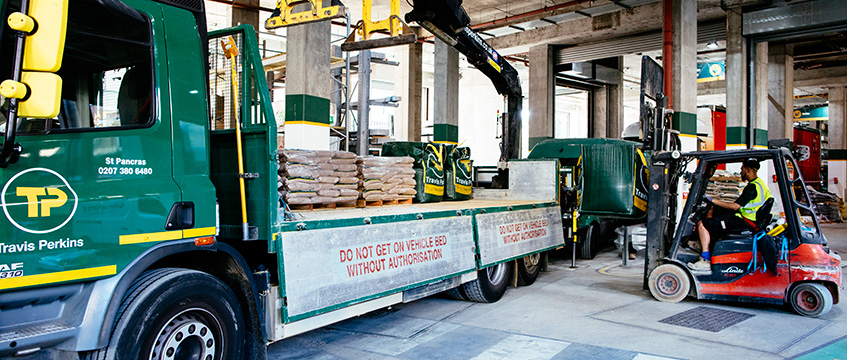Travis Perkins to develop resi above London stores
The building market is tough. Uncertainty in the UK economy, rising inflation, a weak pound, increases in commodity prices, all make operating in the sector hard work for retailers.
And while builders’ merchant Travis Perkins may have this week announced an “on track despite a challenging market” update, with like-for-like sales up by 3.5%, it did admit this was against a “relatively weak” comparable period in 2016.
But the retailer is not just sitting back and hoping for an improvement in the market. It is looking to its property portfolio to see how else it could produce income or attract investment to the business.
The building market is tough. Uncertainty in the UK economy, rising inflation, a weak pound, increases in commodity prices, all make operating in the sector hard work for retailers.
And while builders’ merchant Travis Perkins may have this week announced an “on track despite a challenging market” update, with like-for-like sales up by 3.5%, it did admit this was against a “relatively weak” comparable period in 2016.
But the retailer is not just sitting back and hoping for an improvement in the market. It is looking to its property portfolio to see how else it could produce income or attract investment to the business.
Retailer turned developer
The answer is mixed-use development, particularly residential. Travis Perkins made its first major foray into mixed-use development in 2011, teaming up with student housing provider Unite to get planning permission for a site in King’s Cross.
The scheme, on St Pancras Road, N1, opened in 2014 and comprises a 15,000 sq ft Travis Perkins depot with a 563-bed student housing development above.
In 2011 it also teamed up with Barratt to develop 64 homes above its 4,000 sq ft store on Battersea Park Road, SW11.
And despite protests against that scheme from local residents, Travis Perkins group property director Martin Meech is keen to form joint ventures to do more across the firm’s estate. Not just to sweat the group’s portfolio, but to do something that he hopes will help tackle the capital’s housing shortage, and promote the need to keep construction goods and services in London.
[caption id="attachment_894587" align="aligncenter" width="847"] Travis Perkins’ St Pancras development[/caption]
The builders’ merchant said it was close to securing a development partner for its 12,700 sq ft site in Dalston, E8, and has earmarked its 28,420 sq ft site in Paddington, W2, and a 9,000 sq ft site in Palmers Green, N13, as the next most viable opportunities within the M25. The company wants to trial the concept on at least eight sites before expanding the idea more widely.
“In London you are going to have to be much more adaptable and flexible in future, and in order to compete, you have to think about mixed-use,” says Meech.
Which sites work best?
He says that facilitating a mixed-use development works best on freehold sites.
Travis Perkins has been steadily growing its freehold estate since 2014. The group has around 450 freehold sites in its portfolio.
It says the strategy to increase its freehold estate allows it to “benefit from flexibility of site use, ensure control of strategically important sites and add value to the acquired freehold assets through development”.
For the concept to work, Meech says a site needs to be roughly one acre and that each development needs to provide at least 80 flats. Developments must also adhere to local councils’ height regulations and have sufficient access for contractors from a side road.
Meech has been talking to the Greater London Authority about opportunities across the Travis Perkins estate where it could incorporate more mixed-use, and he says the idea has started to attract interest from developers.
“We are allied and concerned with provision of housing at an affordable level,” he says.
“Everybody providing services in London needs workers and at the moment very few can live close enough to their place of work.
“There are only a few examples in London of this kind of mixed-use and over the last two years we have had a lot of local authorities and developers come here and say ‘This looks pretty good.’”
Although this type of mixed-use concept, putting residential alongside a semi-industrial use, may have been shunned in the past because of noise and safety issues, Meech says there is no reason it shouldn’t work.
He says: “With a number of local authorities and the GLA promoting this, I think this is a type of development we will see a lot more of over the next 10 years.”
To send feedback, e-mail amber.rolt@egi.co.uk or tweet @AmberRoltEG or @estatesgazette











